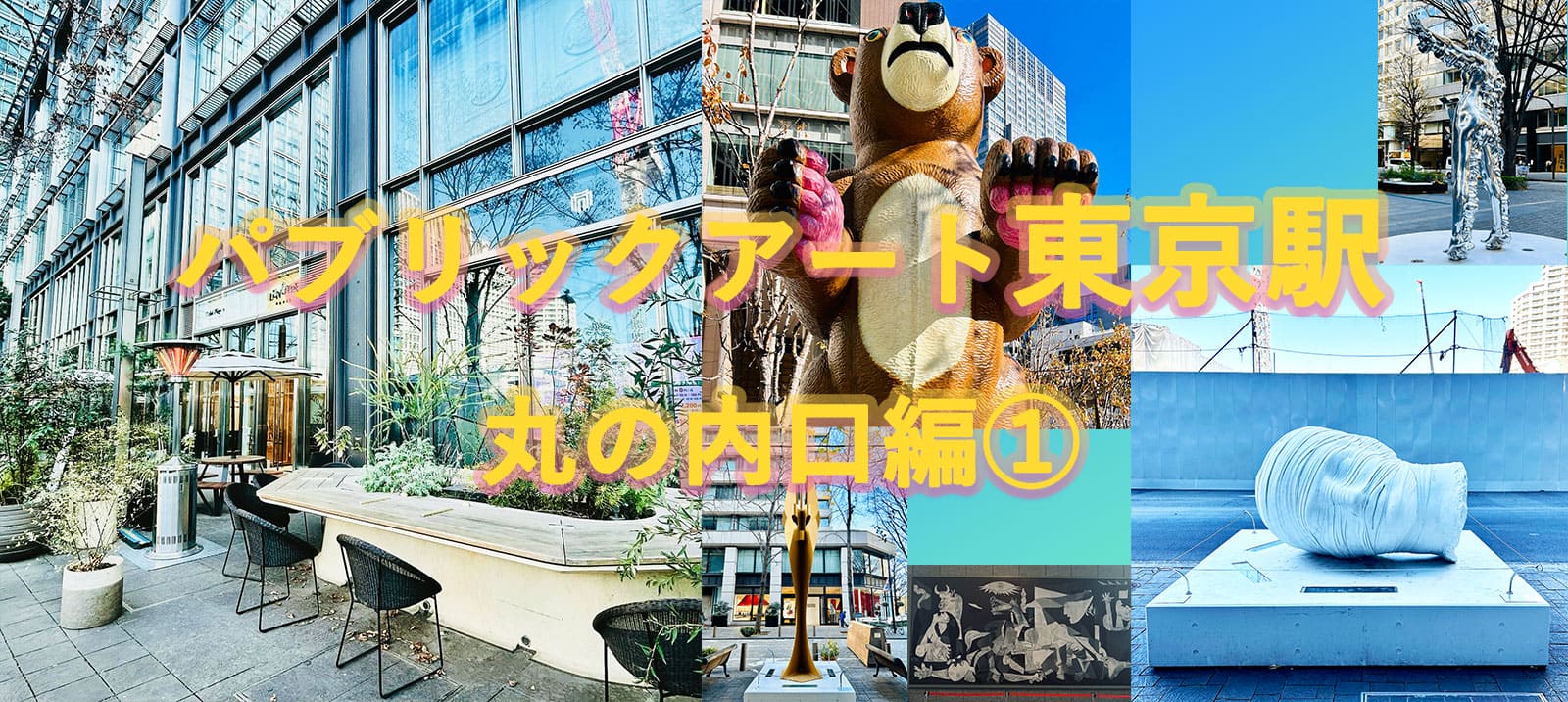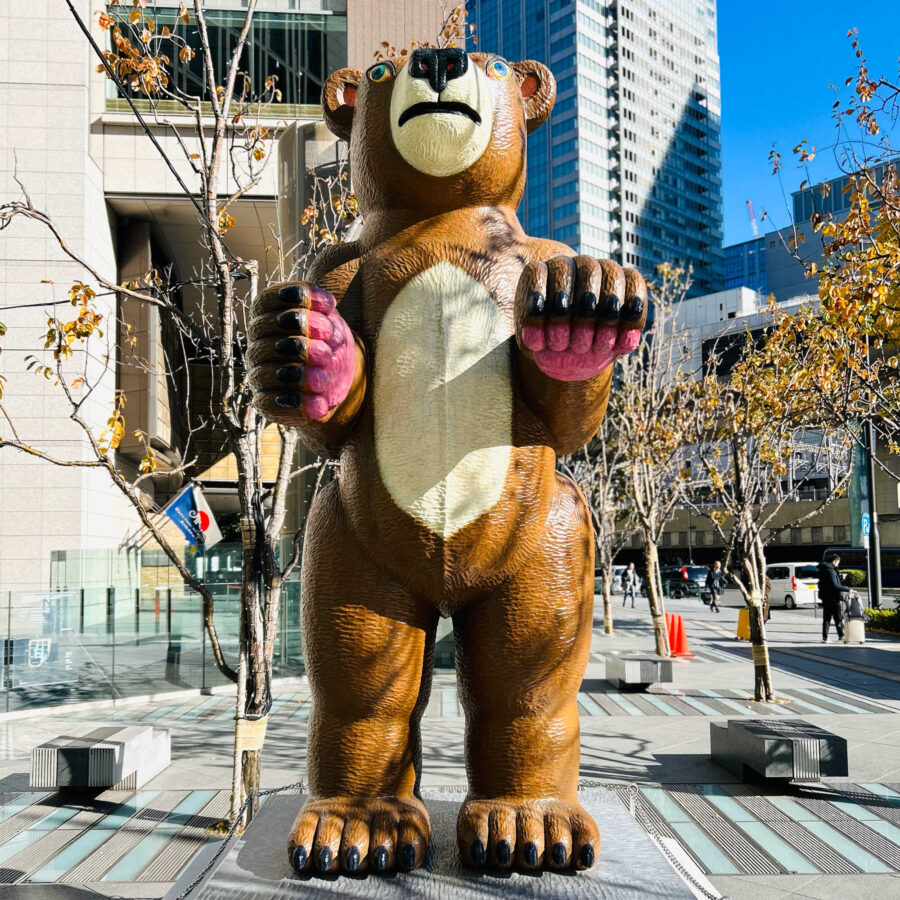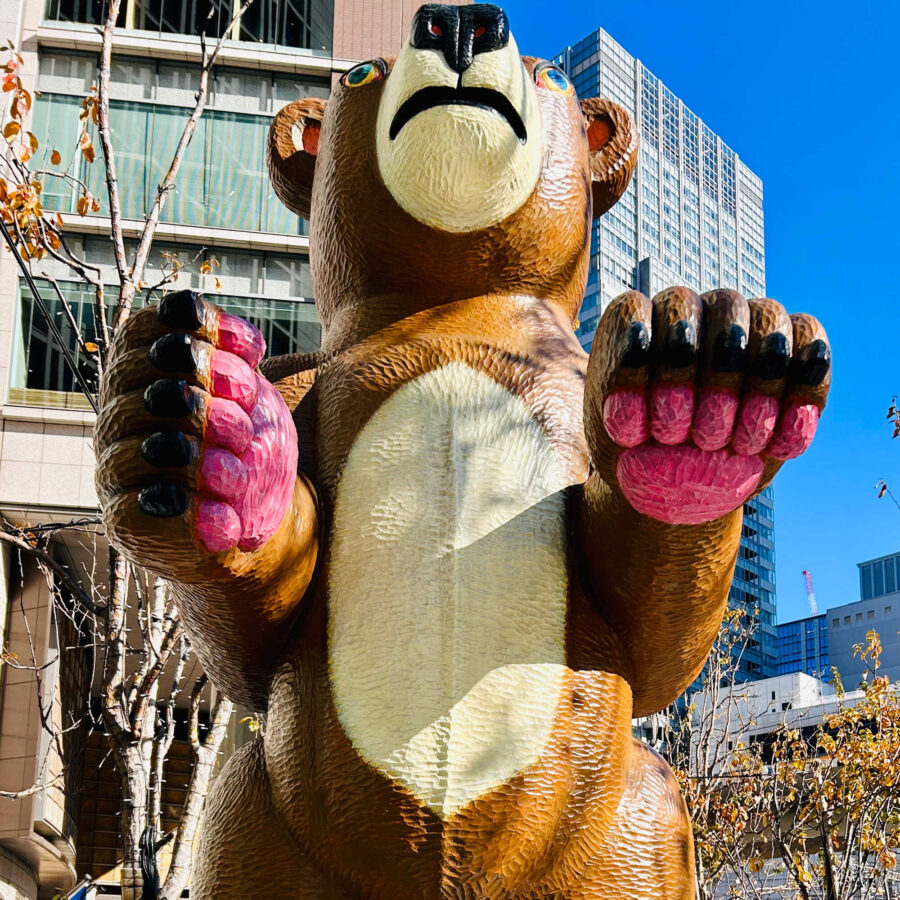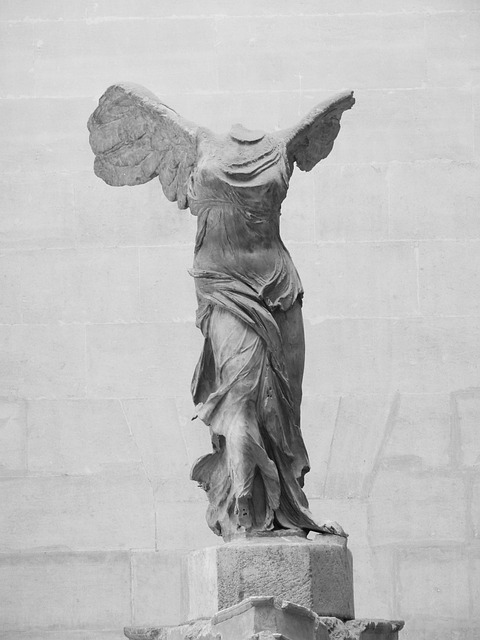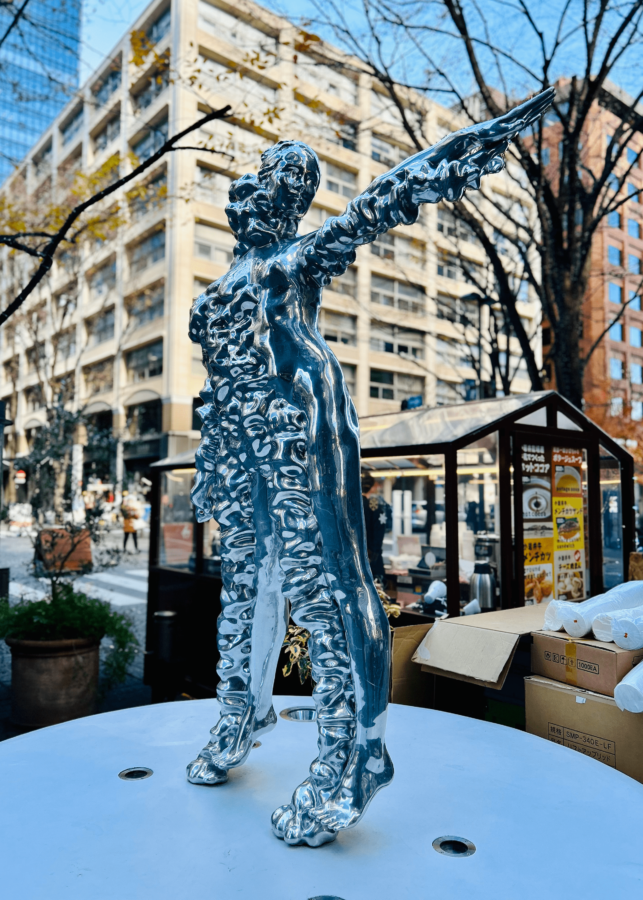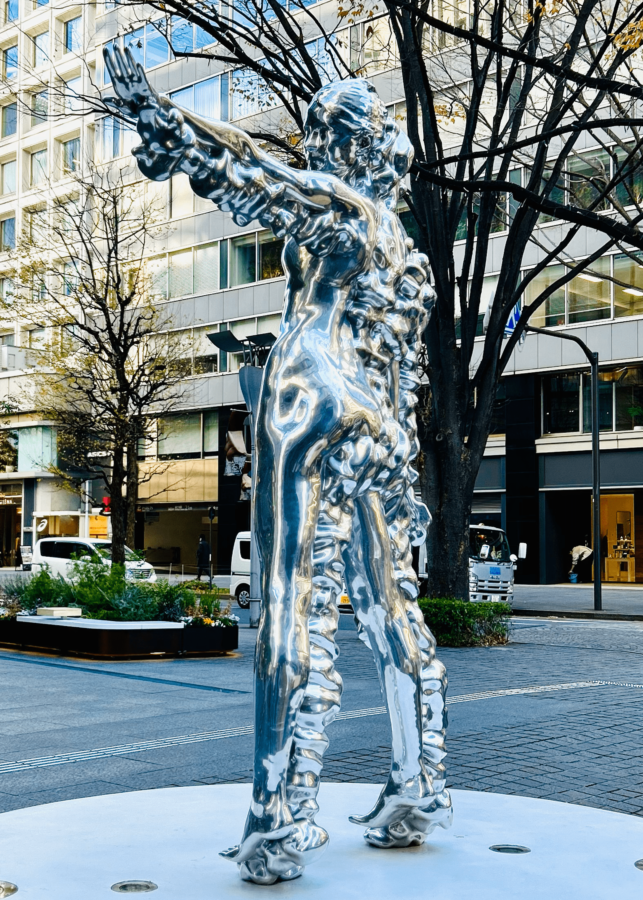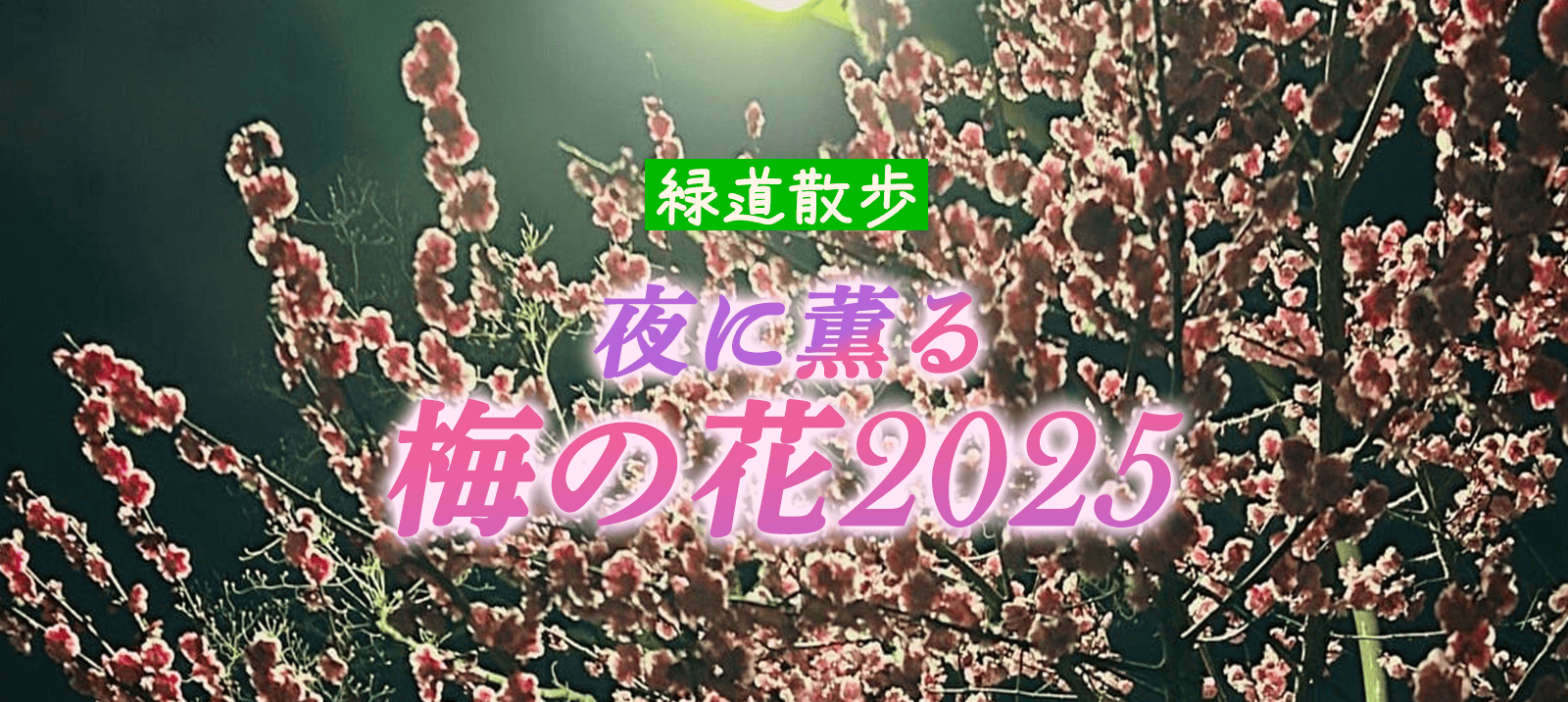
Recently, I’ve completely fallen in love with Tokyo Station. This time, I will introduce the art pieces at Oazo’s ‘Guernica’ near the Marunouchi entrance and the Marunouchi Street Gallery.
While trying to compile the public art around Tokyo Station “Marunouchi Entrance Edition,” the seasons have changed (the last time I went was last August), so I took a stroll focusing on the Marunouchi Street Gallery to retake some photos.
No, it might be more appropriate to say it’s an art pilgrimage.
I enjoy both art and photography, so it’s not a hardship, but I feel that the process of stopping in front of each object, checking the title and artist, and searching for a good angle to capture with the camera is a kind of mental training. (It also trains the body.)
It’s enjoyable to wander around the city aimlessly, but by researching the art in that city at a later date, you can come to love not only the art but also the city itself even more. It’s a happy thing to have more cities you love.
- What is the Marunouchi Street Gallery?
- “Animal 2017-01B2” 2017-2019 Atsuhiko Misawa (Japan)
- 『Guernica 』*Reproduction ceramic plate Pablo Picasso (Spain)
- “Sleeping Head” 1983 Igor Mitray (Poland)
- “Nike 1989” 1991 Pavel Klubalek (Switzerland)
- “Trans-Double Yana (Mirror)” 2012 Kohei Nawa (Japan)
- Continuing with the public art tour near Marunouchi Exit ②.
What is the Marunouchi Street Gallery?
The Marunouchi Street Gallery, an artistic urban development project, actually began 50 years ago. Since 1972, Mitsubishi Estate Co., Ltd. and the Sculpture Forest Art and Culture Foundation have been working on this project, which displays modern sculptures from the Sculpture Forest’s collection and works by world-renowned contemporary artists, changing them every few years. Of course, there are also works by Japanese artists.
(In June 2022, for the 50th anniversary, some pieces were replaced (12 pieces) and new works were installed (5 pieces), bringing the total to 19 pieces on display as of 2024, including ongoing works (2 pieces).)
By the way, the Hakone Open-Air Museum is Japan’s first outdoor art museum, covering an area of about 70,000 square meters, featuring a sculpture garden with sculptures placed on the lawn. It is also engaged in environmental art projects, not only at the Marunouchi Street Gallery but also installing sculptures and monuments in municipalities across the country, as well as lending out sculptural works.
I see, it may seem obvious when you think about it, but much of public art is likely made possible through the cooperation of such museums.
This time, what I have seen are the art pieces marked with circles on the map below (from the Marunouchi Street Gallery website) and a replica of “Guernica” (by Pablo Picasso) located on the first floor of the Oazo building, which houses Maruzen.
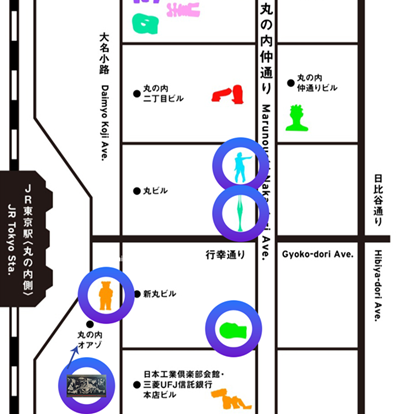
There are some works that I missed and would like to see on another day.
“Animal 2017-01B2” 2017-2019 Atsuhiko Misawa (Japan)
The most prominent and popular one is this Kumazou-kun… no, it must be this bear statue. Here, you often see passersby quietly exclaiming, “Oh, there’s a bear!” and families saying, “Shall we take a picture under the bear?”
While it may not have the fluffy cuteness of a teddy bear, its colorful and hefty giant body exudes an overwhelming presence even in the streets of Tokyo, where tall buildings stand. It is said to be 3 meters tall and weigh 1.5 tons.
『Guernica 』*Reproduction ceramic plate Pablo Picasso (Spain)
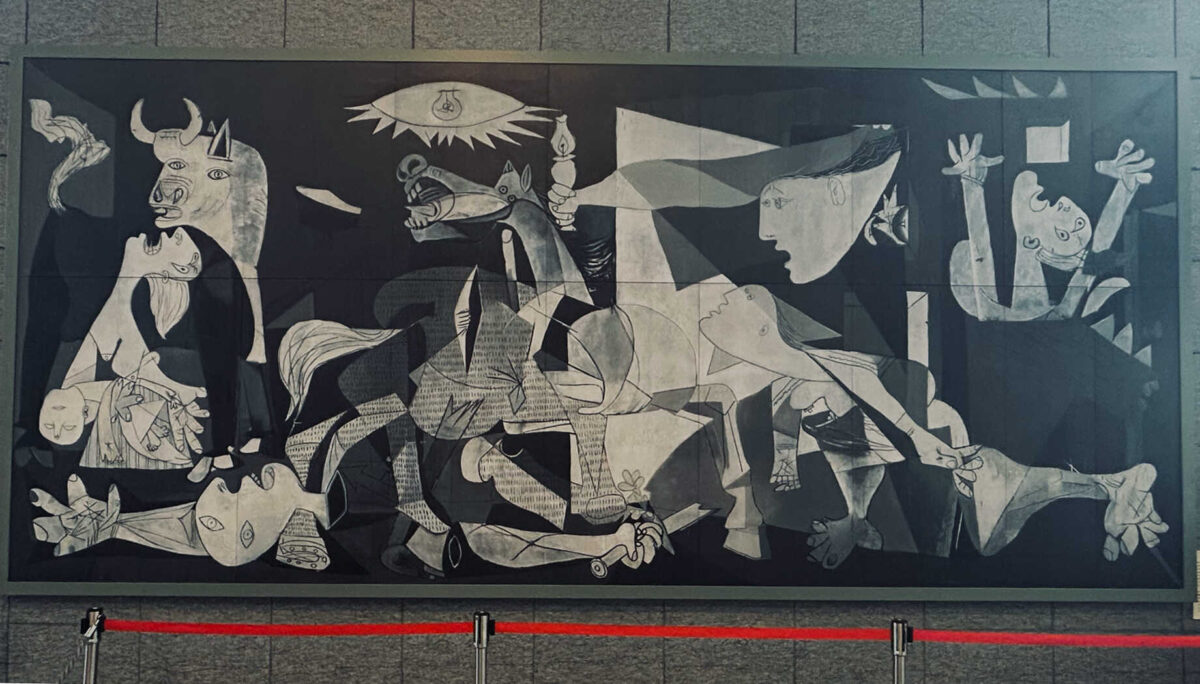
Once you enter the building from the street gallery, the building right behind the bear is Marunouchi Oazo. It is the building that houses the bookstore Maruzen, located just outside Marunouchi North Exit.
A reproduction ceramic plate of Picasso’s ‘Guernica’ is displayed on the wall of the large hall on the first floor.
Guernica (original painting) created in 1937.
Excerpt from the work description.
Pablo Picasso (Spain) 1881-1973
In 1937, at the request of General Franco, the Nazi German military completely destroyed the Spanish town of Guernica. Shocked by this atrocity, Picasso completed a large mural in less than two months, which was presented at the Spanish Pavilion of the Paris International Exposition. Avoiding a direct depiction of the bombing, “Guernica” symbolically portrayed the tragedy of his homeland through a vivid contrast of light and dark, becoming a monumental work imbued with a yearning for peace in the “century of war” that was the 20th century.
The attack on Guernica is said to have been the first full-scale indiscriminate attack in history. Most of the men were out fighting, so the streets of Guernica were full of women and children. On the left side of the work, there is a woman screaming while holding the corpse of a suckling child.
In addition, the black and white monochrome of the work aims for a visual impact, and by depicting the helpless (= colorless) scene of war in black and white, it is said that intense anger, criticism, and condolences for the victims are included.
The invasion of Ukraine by neighboring Russia began in February 2022. Deep down, we all know that war and peacekeeping are not someone else’s business.
The monochrome anti-war painting left by a genius painter of advanced age nearing death is something I hope you will stop and see if you ever visit Ozo.
“Sleeping Head” 1983 Igor Mitray (Poland)
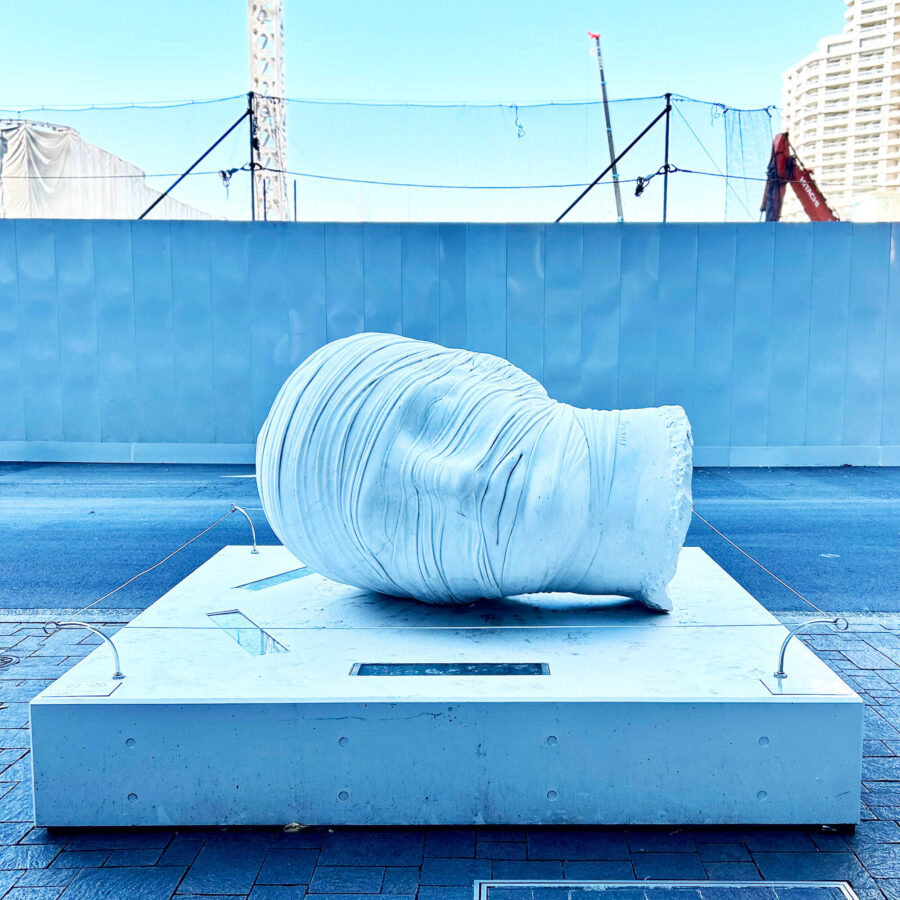
Leaving the Ozof building, I return to the street gallery. I move to Marunouchi Chuo Street and walk straight towards Yurakucho Station, searching for art pieces along the way.
What immediately catches my eye is a giant head statue. It looks like someone’s forgotten item, a large head rolling around…! Even against the backdrop of a construction site, the artwork maintains its dignity as art while blending into the landscape. Am I the only one who feels the greatness of it all?
The bandaged face is said to be immersed in eternal meditation. The writer Mitrai says, “I am striving to rediscover my own roots while constantly exploring humanity.” It is a thought-provoking bust.
“Nike 1989” 1991 Pavel Klubalek (Switzerland)

It may be related to the fact that the writer Pavel Krlbarek was also active as a forged jewelry creator when he thought, “It looks like a hair ornament!” Pavel Krlbarek, born in 1928 into a long line of blacksmiths in Czechoslovakia, moved to Switzerland in 1968 and expressed himself through classical and abstract sculptures that he could create as a blacksmith, while also being active as a forged jewelry creator.
“Nike 1989” is said to be a homage to the beautiful statue of the goddess of victory, “Nike of Samothrace” (circa 190 BC), which is housed in the Louvre Museum in France.
I see, when I hear ‘Nike of Samothrace’, I envision a tall, slender goddess standing there, with the shape of the ribbon on her back representing wings…
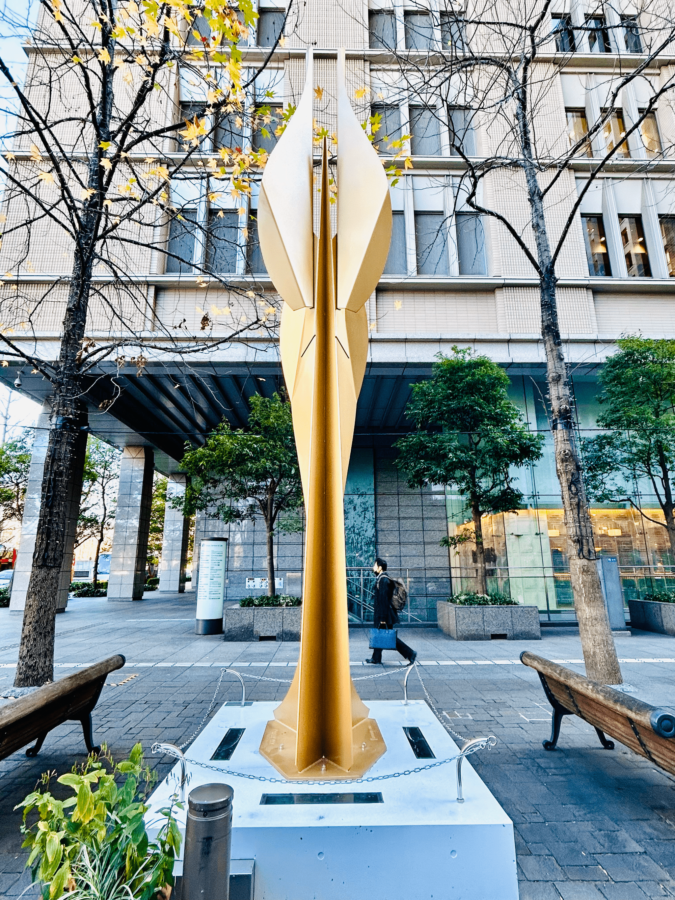
Seven meters tall. She was a tall goddess that completely blended into the city.
“Trans-Double Yana (Mirror)” 2012 Kohei Nawa (Japan)
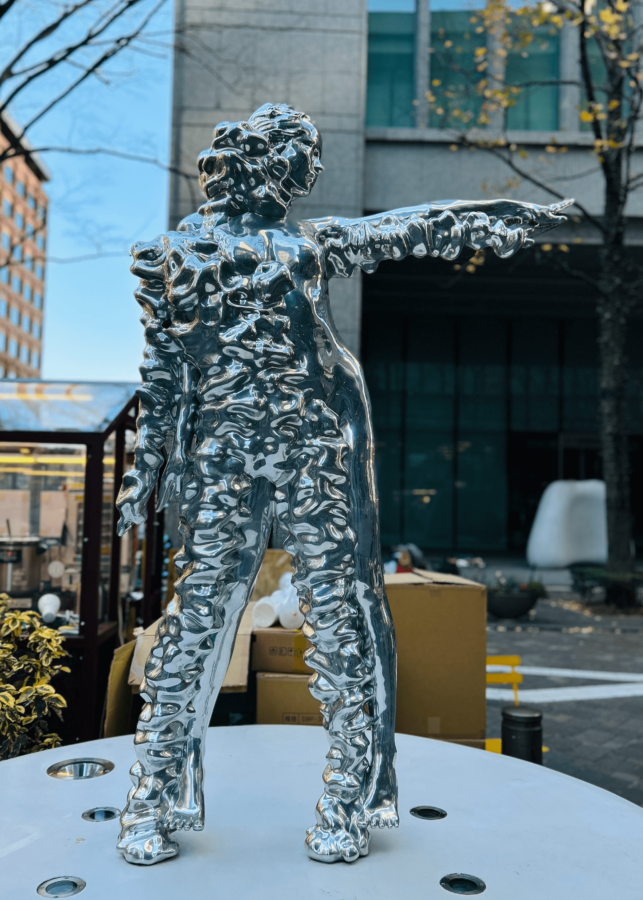
Kohei Nawa, a representative artist of Japan whose works have been exhibited at the Louvre Museum in France. ‘Trans-Double Yana (Mirror)’ standing in the Marunouchi Gallery is one of the Trans series.
Trans
http://kohei-nawa.net/ja/projects_category/trans/
Applying effects to the surface of 3D scanned polygons and re-materializing that data in “Trans.” The information read from the human model (voxel data) acts as a shadow against the material, creating a parallel relationship between reality and the virtual world, as it extracts the traces of existence. The fluid three-dimensional surface that shapes various silhouettes manifests as a hollow energy body, questioning the reality of existence in digital space.
When researching Kohei Nawa’s works, there are various pieces including the Trans series, the “PixCell” series symbolizing the information age released in the early 2000s, the “Rhythm” series which gives rhythm to space through the arrangement and composition of spheres of various sizes, and the art pavilion “Kotei” located at the Zen temple “Shinkatsuji” in Fukuyama City, Hiroshima, which are all interesting.
While it may feel difficult to understand his worldview, the sculptures standing in the city are stylish, radiant, and unique. I was reminded of artistic dancers and clowns in frilly costumes.
Continuing with the public art tour near Marunouchi Exit ②.
Public art tour near Marunouchi Exit ②◀Click here
▼This is the Yaesu exit edition of Tokyo Station.
Public art within a 10-minute walk from Yaesu Exit in Tokyo.

